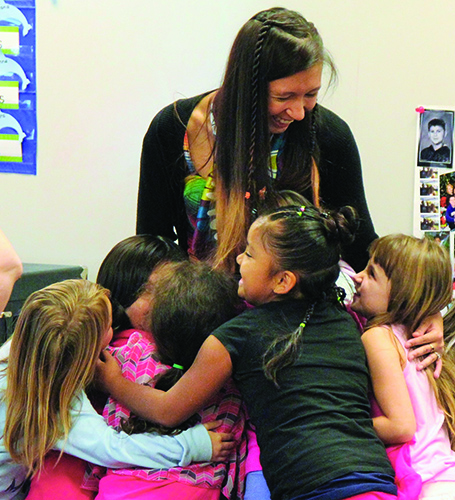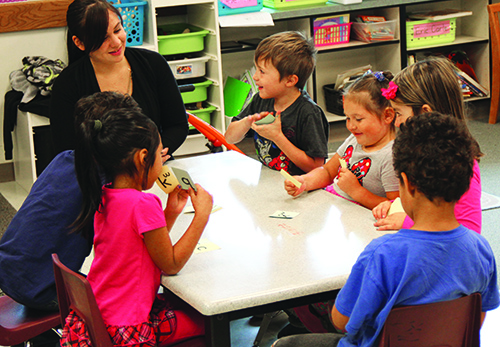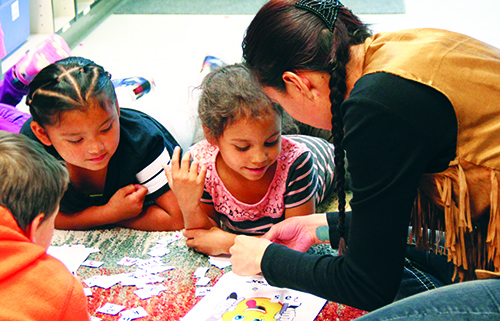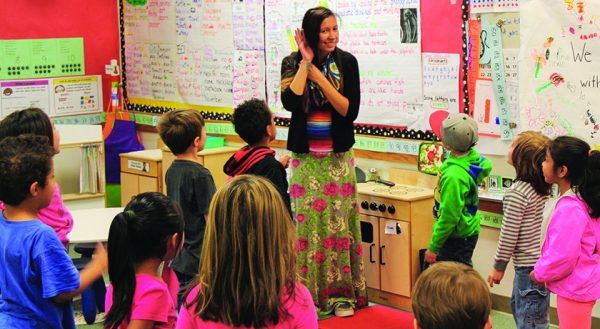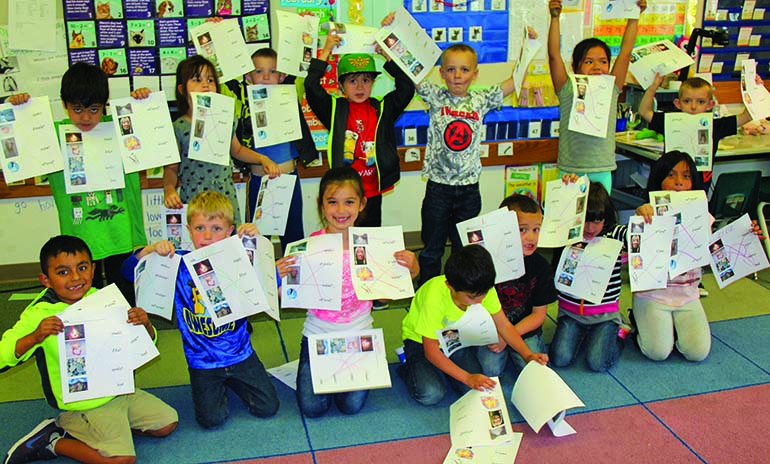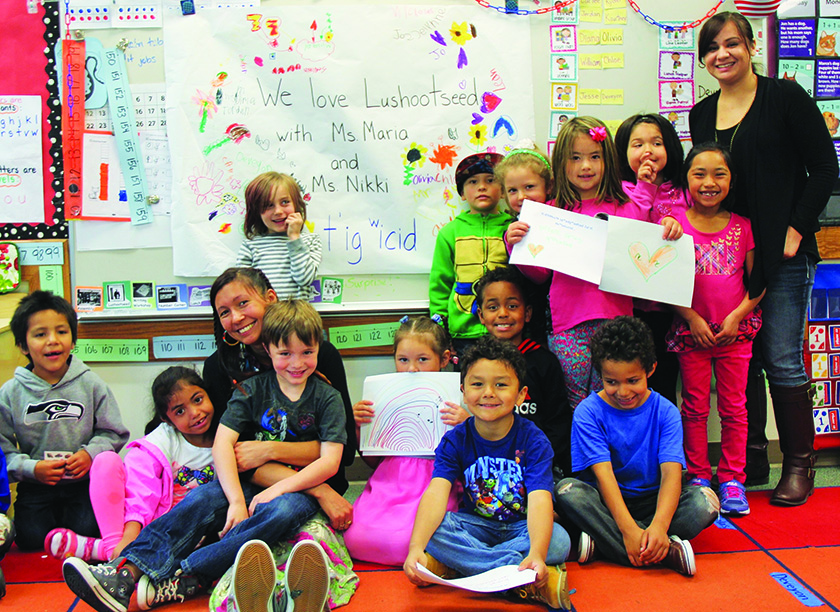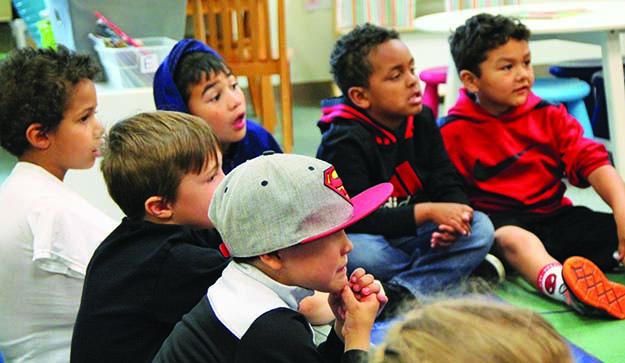by Micheal Rios, Tulalip News
The “7th generation” principle imbedded in Native culture says that in every decision, be it personal, governmental or corporate, we must consider how it will affect our descendants seven generations into the future. Long before environmentalists got us thinking about “carbon footprints” and “sustainability”, indigenous peoples lived in balance with the world around them. But then hundreds of years of colonization happened that nearly drove our population to extinction. Yet, still we remain.
Then came the decades and decades of federal policy aimed at forced assimilation for the remaining Native population who were confined to reservations. Policy after policy required children to be removed from their homes and communities, and enrolled in boarding schools where many were punished or beaten for speaking their Native languages. As a result, generations of Native people either never learned their language or lost their fluency in it. Thus, many links to traditional culture and knowledge were broken. Still we remain.
From the ashes of the colonial fire that ravished our people, we endured even though much was lost. The language of our region, Lushootseed, once spoken by thousands of Coast Salish people in Washington State clings to life by the small number of people dedicated to preserving it. Lushootseed’s territory extends from north of present-day Mount Vernon to south of Olympia.
Recent decades have seen a cultural resurgence in Puget Sound tribal communities, including carving, weaving, canoe making, and efforts to revitalize Lushootseed. New tribal museums and long houses have been constructed, and events such as the annual Canoe Journey involve hundreds of participants and thousands of spectators.
Today, on the Tulalip reservation, few elders remain who learned Lushootseed as a first language. In fact, Lushootseed Department Manager Michelle Balagot says there may be only 30-40 tribal members who can speak Lushootseed with some degree of conversational skill. She adds that although that number is incredibly low, the department is working hard to make sure that the language survives, and the next few years will be critical if the language is to be revitalized to the point that children become and remain fluent speakers.
The biggest advancement in preserving and revitalizing Lushootseed amongst Tulalip tribal members has been building an essential staff of Lushootseed teachers whose love for their language and culture can easily permeate through the young minds and spirits of our most precious resource, our children.
This past school year the Lushootseed Department had full access to teach our ancestral language to the kindergarten classes and one 1st grade class at Quil Ceda Tulalip Elementary School. It was the return back to a curriculum that had been paused in 2011 when the old Tulalip Elementary was closed.
“We have noticed an increase in student engagement when students have the chance to learn the language that connects them to their heritage. It certainly makes education more meaningful for our students,” says Cory Taylor, Quil Ceda Tulalip Elementary Principal. “While the Lushootseed program serves many Native students, it also benefits non-Natives, too. These students have the unique opportunity to develop skills to be culturally responsive. These skills will be beneficial throughout their lives. As students learn about other cultures and languages they are more likely to honor diversity and appreciate cultural awareness.”
Lushootseed language teachers Maria Martin and Nikki St. Onge, known respectfully as Miss Maria and Ms. Nikki to their students, were selected to initiate the language revival at the elementary. They taught three classes individually and one “immersion” class jointly, for a grand total of seven classes.
For Miss Maria and Ms. Nikki, it was an opportunity to perpetuate the many Lushootseed stories and phrases they learned as children, and build upon the legacy of those who came before them.
“My year teaching at Tulalip Quil Ceda was wonderful. I didn’t get a chance to learn Lushootseed in school after I left the Montessori, so being able to go back to the school I attended as a child and teach Lushootseed is amazing,” said Miss Maria. “This means we are growing as a language department and spreading our culture in places we weren’t able to before. Growing up I had a yearning to know and learn my culture, but it wasn’t offered in the schools. For the students that are enrolled in Tulalip or surrounding tribes, Lushootseed is their language, and my hope is they’ll be filled with the same kind of pride I have to know the words of our ancestors.”
“I really enjoyed teaching at Tulalip Quil Ceda. I am very grateful to have the opportunity to work with some of my students, since they were babies when I worked at the child care center in 2011. Then again at Montessori when I first started in the Lushootseed department in 2012, and now moving up with them to kindergarten,” marvels Ms. Nikki. “Not a lot of people get the opportunity to have this experience. It’s really rewarding to watch them grow and develop their own personalities and characteristics, and also teach them such an important part of our culture.
“Growing up at my Grandma Rachel’s house, I was exposed to Lushootseed a little bit with words or phrases like: x̌ʷubiləxʷ (be quiet), gʷəƛ̕əlad (stop it, behave), spuʔ (fart/blow wind), ʔaləxʷ k̓ʷid (what time is it?), hədʔiw (come in), č̓ut̕əp̓ (flea), sp̓əc̓ (feces), sqigʷəc (deer), yəx̌ʷəlaʔ (eagle), sqʷəbayʔ (dog), and pišpiš (cat). I was always interested in learning to speak Lushootseed, but it was never offered in school. When I saw the job advertisement within the Lushootseed Department I was excited. I have always wanted to learn Lushootseed and I love working with kids, so it was a perfect opportunity for me to grow as a person and to give back to the Tribe and community.”
Both Miss Maria and Ms. Nikki having taught Lushootseed at the Tulalip Montessori meant a strong familiarity and trust with their Tulalip students in their kindergarten classes at the elementary. All of their former students remembered them and were very excited to have them as Lushootseed teachers again. The excitement was shared by both teachers as they were able to create their own curriculum and teaching plans for students they knew very well. They knew what teaching methods would work and wouldn’t work with their students already.
Throughout the school year the students learned to play games, some of their favorites being təs-təs (matching game), ɬiʔɬdahəb (fishing), stab kʷi ʔəsx̌ʷil̕ (what’s missing?), xʷiʔ gʷadsx̌ək̓ʷud (don’t turn over), ʔuc̓əlalikʷ čəd (I win/bingo), go fish, and tic-tac-know. Students completed daily work sheets that taught them how to read and write in Lushootseed while reinforcing many of the vocabulary words they learned at Montessori and the new Early Learning Academy.
Some of their favorite songs they learned are: ʔi čəxʷ syaʔyaʔ (hello friend), kʷədačiʔb čəɬ syaʔyaʔ (ring around the rosy), huyʔ syaʔyaʔ (good bye friend), ʔə tə tib, ʔulub miʔman pišpišpiš (ten little kittens), šəqild st̕ilib (respect song), sʔacus sʔilalubid (head, shoulders), baqʷuʔ stubs (Frosty the Snowman), and waq̓waq̓ st̕ilib (frog song). The students were able to hear stories that were translated into Lushootseed and traditional stories such as “tsiʔəʔ bəšč̓ad” (Lady Louse), “tsi sxʷəyuq̓ʷ” (The Basket Lady), and “Clamming with Lizzie.” They learned to count up to 25 and were exposed to 30 and 40. They have also learned verbs, farm animals, woodland animals, body parts, clothing and so much more.
As the year progressed and the Lushootseed curriculum continued to evolve, so did the students. They developed such a good working knowledge with certain phrases and words that it became common place to hear the young students speaking Lushootseed even when Miss Maria and Ms. Nikki weren’t around.
“It’s difficult to put into words because it’s such an amazing experience to witness, this ownership of language and seeing themselves reflected in their school. It feels like this belongs to them between the drumming, the dancing and morning messages, then coming into class and starting our day with Lushootseed,” stated Mrs. Poyner, Kindergarten teacher and host to the immersion class taught by both Lushootseed teachers. “Having both Miss Maria and Ms. Nikki in the class at the same time I’ve really noticed the students are picking up the language much more quickly. They are using it in other parts of the day, like when we’re teaching math they’ll start counting in Lushootseed instead of English. When we’re doing letters of the alphabet and brainstorming words that start with a specific letter they’ll come up with Lushootseed words. When we are learning new stories with animals in it they’ll call the animals by their Lushootseed name. It’s so exciting to see them apply what they’ve learned into other pieces of their day.”
The teachers are even hearing numerous stories about their students using Lushootseed at home with their parents.
“I have heard stories of the students going home and singing the songs they learned in class and using their Lushootseed words,” says Miss Maria. “Running into parents of my students and hearing that they are reinforcing their Lushootseed at home makes my heart glow.”
Ms. Nikki echoes the sentiment, “Hearing from parents and teachers that students are reinforcing Lushootseed outside of their time spent with me in classroom is probably the most rewarding feeling. It means the students are not just learning a curriculum, they are learning a language, their language.”
Being able to demonstrate what you’ve learned is the basis of knowledge, and the young students using Lushootseed when the teachers aren’t around is proof positive the internal flame to connect with our culture and ancestors through language is being rekindled. It’s all part of an essential process to carry on our ancestors’ legacy by keeping the language alive. Because seven generations from now, we want Lushootseed to be the common language of all Tulalip people, like it was for our ancestors.
Contact Micheal Rios: trios@tulaliptribes-nsn.gov

